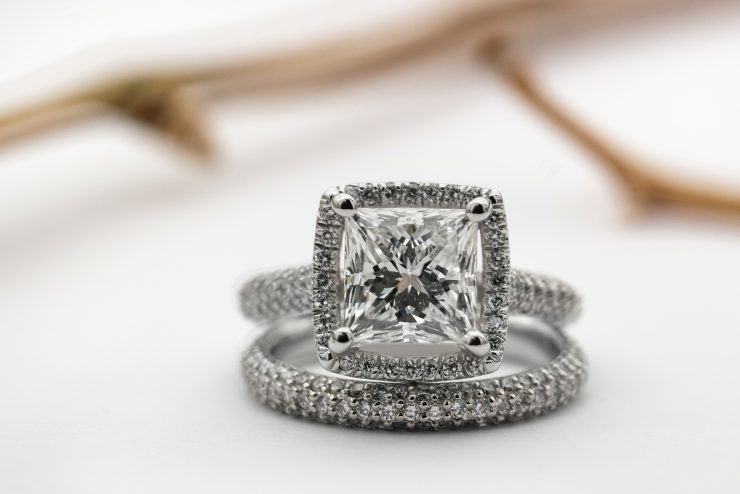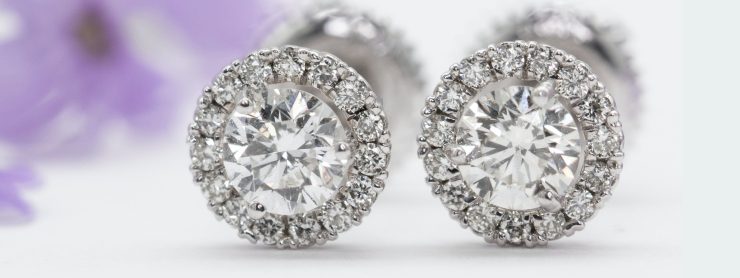Selling a lab-grown diamond requires careful consideration of the platform you choose, as each marketplace has its own advantages, disadvantages, and target audiences. With the rising popularity of synthetic diamonds, sellers now have multiple online platforms to explore, including eBay, Etsy, and specialized jewelry sites. Understanding how these platforms work, their fee structures, buyer demographics, and security policies is essential to making an informed decision. This article will provide a detailed comparison of these three options, helping you choose the best marketplace for selling your lab-grown diamond efficiently and profitably.

Selling Lab-Grown Diamonds on eBay
eBay is one of the largest online marketplaces globally, offering a vast audience and the potential to reach buyers from various backgrounds. It provides sellers with flexibility, allowing them to list items as auctions or fixed-price listings. eBay’s bidding system can sometimes drive prices higher, which can be beneficial for sellers looking to maximize profits. However, competition is intense, and without proper marketing and listing optimization, your lab-grown diamond may not receive the visibility it needs.
One of the major advantages of eBay is its built-in buyer protection policies, which can increase buyer confidence. However, these policies often favor the buyer, meaning sellers must be cautious when setting return policies and handling disputes. Additionally, eBay charges listing fees and a final value fee, which can reduce overall profitability. Since eBay caters to a broad range of buyers, including those looking for deals, luxury items may not always fetch their expected price unless marketed effectively. Sellers need to invest time in creating high-quality images, detailed descriptions, and possibly even using promoted listings to stand out.
Selling Lab-Grown Diamonds on Etsy
Etsy is traditionally known for handmade and vintage items, but it has expanded its marketplace to include fine jewelry, including lab-grown diamonds. This platform attracts a niche audience that values craftsmanship, sustainability, and unique designs. If your lab-grown diamond is part of a custom or artisanal jewelry piece, Etsy could be a strong option for targeting buyers interested in ethically sourced and eco-friendly alternatives to natural diamonds.
One of the key benefits of Etsy is its supportive community and built-in marketing tools that help sellers showcase their products. Unlike eBay, which caters to a wide variety of goods, Etsy provides a more curated shopping experience, meaning that buyers searching for lab-grown diamonds may be more intentional in their purchases. However, Etsy has specific rules regarding jewelry sales, and sellers must ensure they comply with guidelines related to material disclosure and authenticity.
Etsy’s fee structure includes a listing fee, a transaction fee, and payment processing fees, which can add up. Additionally, Etsy’s search algorithm favors shops with strong reputations, meaning new sellers may need to work harder to establish credibility. Marketing through social media and Etsy Ads can improve visibility, but this requires additional investment. Despite these challenges, Etsy offers a more boutique-style marketplace where ethical and lab-grown diamond jewelry can resonate with the platform’s eco-conscious audience.
Selling Lab-Grown Diamonds on Specialized Jewelry Sites
Unlike general marketplaces like eBay and Etsy, specialized jewelry sites focus exclusively on fine jewelry and diamonds, making them an ideal choice for sellers looking to target serious buyers. These platforms often have a pre-screening process to ensure authenticity, which can increase trust and attract customers willing to pay premium prices. Some well-known jewelry-specific marketplaces include Worthy, I Do Now I Don’t, and even online retailers that offer second-hand luxury diamond resale programs.
One of the biggest advantages of using specialized jewelry platforms is that they provide valuation and authentication services, which can help sellers price their lab-grown diamonds accurately. This eliminates the risk of underpricing due to market fluctuations or lack of knowledge. Additionally, these platforms typically have established customer bases that are already looking for high-quality diamonds, making it easier to find a buyer without extensive marketing efforts.
However, the trade-off for using specialized platforms is that they often charge higher commission fees than eBay or Etsy. Some sites operate on a consignment basis, meaning sellers may have to wait longer for their items to sell, as opposed to the direct buyer-to-seller model seen on eBay. Additionally, since these sites cater to high-end buyers, competition among sellers can be stiff, requiring professional-grade photography and detailed product descriptions to attract potential buyers.
Comparing Fees and Costs Across Platforms
When selecting a platform to sell your lab-grown diamond, it’s important to understand the fee structures of eBay, Etsy, and specialized jewelry sites. Each platform has different costs associated with listing, selling, and payment processing, which can impact overall profitability.
-
eBay Fees: eBay charges sellers a final value fee, which is a percentage of the total sale price (including shipping). For jewelry and watches, this fee can range from 12% to 15% depending on the selling price. There are also insertion fees if you list more than a certain number of items per month. Additionally, eBay offers promoted listings, which allow sellers to pay extra to boost their listings in search results. Sellers should also account for PayPal or eBay-managed payment processing fees.
-
Etsy Fees: Etsy has a $0.20 listing fee per item, plus a 6.5% transaction fee on the total order amount. Additionally, there is a 3% + $0.25 payment processing fee for each transaction. Etsy also provides advertising opportunities through Etsy Ads and offsite ads, which can increase exposure but add extra costs. If you’re selling high-value lab-grown diamonds, these fees can accumulate quickly.
-
Specialized Jewelry Sites Fees: Fees on jewelry-specific platforms vary significantly. Some sites charge commission fees between 10% and 20%, while others operate on a consignment basis, taking a percentage only after the item sells. Platforms like Worthy auction diamonds, and they take a 15%-20% commission on the final sale price. While these fees may seem higher than eBay or Etsy, specialized platforms offer valuation, authentication, and a more targeted buyer audience, potentially leading to higher final sale prices.

Security and Buyer Trust Considerations
Selling high-value items like lab-grown diamonds comes with security risks, including fraud, chargebacks, and counterfeit claims. Different platforms have different security measures in place to protect both buyers and sellers.
-
eBay: eBay’s Money Back Guarantee heavily favors buyers, meaning sellers must be cautious when handling disputes. Buyers can claim an item is “not as described” and return it, even if the diamond was accurately listed. To minimize risks, sellers should use insured shipping with tracking and document the diamond’s condition before sending it.
-
Etsy: Etsy also provides buyer protection, but sellers have more control over return policies. If a buyer disputes a transaction, Etsy’s mediation process allows sellers to present evidence. However, fraudulent buyers may still attempt chargebacks, so sellers should ensure all transactions are well-documented.
-
Specialized Jewelry Sites: These platforms often have stronger fraud prevention mechanisms, including professional authentication services. For example, some sites require diamonds to be inspected before listing or use escrow services to hold payments until the transaction is complete. This adds an extra layer of security for sellers, reducing the risk of chargebacks or fraudulent claims.
Shipping and Logistics Considerations
Shipping a lab-grown diamond safely is critical, as improper handling can lead to loss, damage, or disputes. Each platform has different expectations for shipping, insurance, and delivery confirmation.
-
eBay: Sellers are responsible for shipping and should use insured shipping with signature confirmation for high-value items. Services like FedEx, UPS, or USPS Registered Mail offer additional security. eBay allows sellers to add shipping costs to the listing, but offering free shipping can sometimes attract more buyers.
-
Etsy: Etsy also requires sellers to handle shipping logistics, and it provides shipping label services with carrier discounts. For expensive diamonds, sellers should use insured, trackable shipping services to avoid disputes. Etsy allows sellers to set their own return and refund policies, which can affect shipping expectations.
-
Specialized Jewelry Sites: Many specialized platforms handle shipping for the seller. Some sites provide prepaid insured shipping labels, ensuring the diamond reaches the buyer or authentication center securely. This is a significant advantage over eBay and Etsy, as it minimizes the seller’s liability in case of shipping issues.
Which Platform is Best for Selling Your Lab-Grown Diamond?
Choosing the best platform depends on your priorities as a seller. Here’s a summary of when each platform might be the best choice:
-
eBay is best for sellers who want a fast-selling marketplace with a large audience but are comfortable handling marketing, shipping, and buyer disputes. It’s ideal for sellers willing to list competitively and manage risks associated with buyer protection policies.
-
Etsy is best for sellers who create custom lab-grown diamond jewelry or want to target an audience that values ethical and unique designs. However, building a reputation on Etsy takes time, and fees can add up for high-value items.
-
Specialized jewelry sites are best for sellers looking for a secure, high-end marketplace where serious buyers search for lab-grown diamonds. These platforms often offer authentication and consignment services, making them ideal for sellers who prioritize trust and security over quick sales.
Conclusion
Selling a lab-grown diamond requires strategic decision-making, and the right platform can significantly impact profitability and ease of sale. eBay provides a broad audience but requires careful listing strategies and dispute management. Etsy appeals to buyers interested in sustainability and custom jewelry, though its niche audience and fees should be considered. Specialized jewelry sites offer security and targeted buyers but often come with higher commission fees. By weighing the benefits and challenges of each platform, sellers can choose the best marketplace to maximize their returns and ensure a smooth transaction.